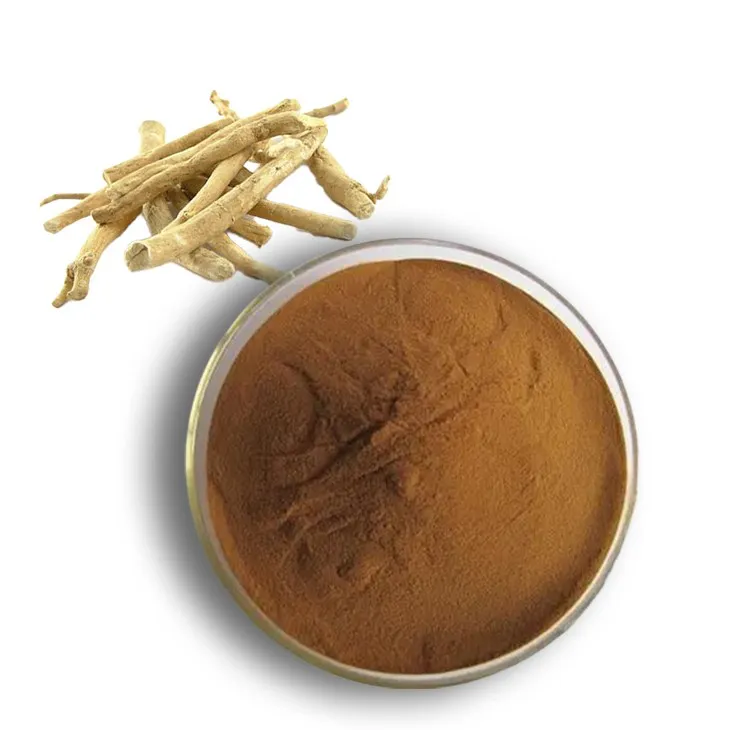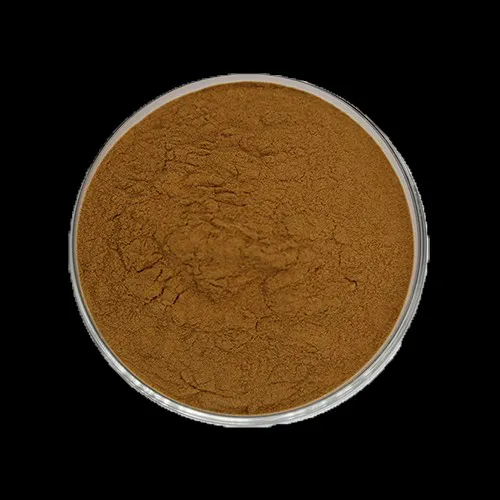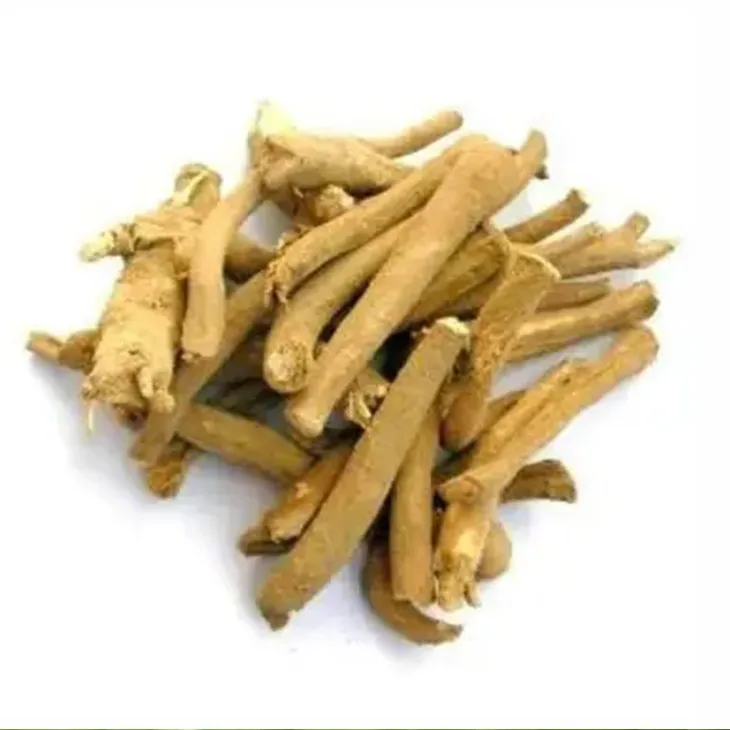- 0086-571-85302990
- sales@greenskybio.com
The process of extracting active substances from Withania somnifera in Withania somnifera extract.
2024-11-29

1. Introduction
Withania somnifera, also known as Ashwagandha, is a remarkable plant that has been used in traditional medicine systems for centuries. It is native to India, North Africa, and the Middle East. This plant contains a plethora of potential bioactive components such as alkaloids, withanolides, and sitoindosides. These active substances are believed to possess various pharmacological properties, including anti - stress, anti - inflammatory, antioxidant, and immunomodulatory effects. Due to these potential health benefits, there is a growing interest in extracting these active substances for use in the pharmaceutical, nutraceutical, and cosmeceutical industries. However, the extraction process is complex and requires careful consideration to ensure the integrity and effectiveness of the extracted active substances.

2. Pretreatment of Withania somnifera for Extraction
2.1 Collection and Cleaning
The first step in the extraction process is the proper collection of Withania somnifera. The plant parts (usually the roots and leaves) are harvested at the appropriate time to ensure maximum content of active substances. After harvesting, thorough cleaning is essential to remove dirt, debris, and other contaminants. This can be done by washing the plant parts with clean water multiple times.
2.2 Drying
Once cleaned, the plant material needs to be dried. Drying helps in reducing the moisture content, which is crucial for subsequent extraction steps. There are different methods of drying, such as air - drying and oven - drying. Air - drying is a more natural method, where the plant parts are spread out in a well - ventilated area. However, it may take a longer time. Oven - drying, on the other hand, can be done at a controlled temperature and humidity, which can accelerate the drying process. The drying temperature should be carefully selected to avoid degradation of the active substances. Generally, a temperature range of 40 - 60°C is considered suitable for drying Withania somnifera.
2.3 Grinding
After drying, the plant material is ground into a fine powder. Grinding increases the surface area of the plant material, which enhances the extraction efficiency. The powder should be of a consistent size to ensure uniform extraction. A grinder or a mill can be used for this purpose. However, care should be taken not to overheat the powder during grinding, as it may lead to the degradation of the active substances.
3. Extraction Technologies
3.1 Conventional Solvent Extraction
- One of the most commonly used methods for extracting active substances from Withania somnifera is solvent extraction. In this method, a suitable solvent is used to dissolve the active substances from the plant powder.
- Common solvents include ethanol, methanol, and water. Ethanol is often preferred due to its ability to dissolve a wide range of bioactive compounds, its relatively low toxicity, and its compatibility with subsequent purification steps.
- The extraction process typically involves mixing the plant powder with the solvent in a specific ratio (e.g., 1:5 or 1:10, plant powder to solvent). The mixture is then stirred or shaken for a certain period, usually several hours to days, at a controlled temperature.
- After extraction, the mixture is filtered to separate the liquid extract (containing the dissolved active substances) from the solid residue. The liquid extract can then be further processed for purification and concentration.
3.2 Supercritical Fluid Extraction (SFE)
- Supercritical fluid extraction has emerged as a modern and efficient extraction technology in recent years. In SFE, a supercritical fluid, most commonly carbon dioxide (CO₂), is used as the extraction solvent.
- Supercritical CO₂ has several advantages. It has a low critical temperature (31.1°C) and pressure (73.8 bar), which allows for extraction at relatively mild conditions. This helps in maintaining the integrity of the heat - sensitive active substances present in Withania somnifera.
- The extraction process involves pressurizing CO₂ to its supercritical state and passing it through the ground plant material. The supercritical CO₂ selectively dissolves the active substances and is then depressurized, causing the CO₂ to return to its gaseous state and leaving behind the extracted active substances.
- However, SFE also has some limitations. The equipment required for SFE is relatively expensive, and the process requires careful control of pressure, temperature, and flow rate to ensure optimal extraction efficiency.
3.3 Microwave - Assisted Extraction (MAE)
- Microwave - assisted extraction is another innovative extraction method. In this process, microwave energy is used to heat the solvent - plant material mixture.
- The microwaves cause rapid heating, which can significantly reduce the extraction time compared to conventional solvent extraction. For example, in some cases, an extraction that may take hours with conventional methods can be completed in minutes using MAE.
- However, the use of microwaves also requires careful control. Excessive microwave energy can lead to the degradation of the active substances. Therefore, optimizing the microwave power, extraction time, and solvent - to - plant material ratio is crucial for obtaining a high - quality extract.

4. Challenges in the Extraction of Active Substances
4.1 Maintaining the Integrity of Active Substances
- Many of the active substances in Withania somnifera, such as withanolides, are sensitive to heat, light, and oxygen. During the extraction process, exposure to these factors can lead to their degradation, reducing the effectiveness of the extract.
- To maintain the integrity of these substances, extraction should be carried out under controlled conditions. For example, using low - temperature extraction methods like supercritical fluid extraction can help. Additionally, protecting the extract from light and oxygen during and after extraction is also important. This can be achieved by using amber - colored containers and adding antioxidants to the extract.
4.2 Optimizing the Extraction Yield
- The extraction yield, which is the amount of active substances obtained from a given amount of plant material, is an important factor in the extraction process.
- Several factors can affect the extraction yield. These include the choice of extraction method, the type and concentration of the solvent, the extraction time, and the particle size of the plant material. For example, a finer particle size can increase the surface area available for extraction, leading to a higher yield. However, if the particle size is too fine, it may lead to problems such as clogging during filtration.
- Optimizing these factors requires careful experimentation and analysis. For instance, in solvent extraction, different solvents and solvent mixtures can be tested to find the one that gives the highest yield of active substances. Similarly, in supercritical fluid extraction, varying the pressure, temperature, and flow rate can be explored to optimize the extraction yield.

5. Conclusion
The extraction of active substances from Withania somnifera is a complex but important process. Pretreatment of the plant material, including collection, cleaning, drying, and grinding, lays the foundation for effective extraction. Different extraction technologies, such as conventional solvent extraction, supercritical fluid extraction, and microwave - assisted extraction, each have their own advantages and limitations. Meanwhile, challenges such as maintaining the integrity of active substances and optimizing the extraction yield need to be addressed. Understanding these aspects is crucial for researchers and industries involved in the extraction of natural products from Withania somnifera. With further research and technological advancements, it is expected that more efficient and effective extraction methods will be developed, enabling the full potential of Withania somnifera's bioactive components to be realized in various applications.
FAQ:
What are the main active substances in Withania somnifera?
Withania somnifera contains several important active substances. Some of the main ones include withanolides, which are steroidal lactones. These withanolides have various biological activities such as antioxidant, anti - inflammatory, and immunomodulatory properties. There are also alkaloids present in the plant which may contribute to its pharmacological effects.
Why is supercritical fluid extraction considered for extracting active substances from Withania somnifera?
Supercritical fluid extraction is considered for several reasons. Firstly, it is a relatively clean and green extraction method. Supercritical fluids, often carbon dioxide, have properties between those of a gas and a liquid at certain conditions. This allows for better penetration into the plant material and more efficient extraction of the active substances compared to some traditional methods. It can also operate at lower temperatures, which is beneficial for heat - sensitive active substances in Withania somnifera as it helps to maintain their integrity.
What are the challenges in maintaining the integrity of active substances during extraction?
One of the main challenges is the use of inappropriate extraction conditions. High temperatures, for example, can cause degradation of heat - sensitive active substances like some withanolides. Exposure to certain solvents for a long time can also lead to chemical reactions that may change the structure and thus the activity of the active substances. Additionally, physical forces during the extraction process, such as excessive agitation, might break down some of the complex molecules of the active substances.
How can the extraction yield of active substances from Withania somnifera be optimized?
To optimize the extraction yield, several factors can be considered. Firstly, proper pre - treatment of the plant material is crucial. This can include drying, grinding to an appropriate particle size to increase the surface area available for extraction. Selection of the right extraction method and its parameters is also important. For example, in supercritical fluid extraction, adjusting the pressure, temperature, and flow rate of the supercritical fluid can significantly affect the yield. The use of co - solvents in some extraction methods can also enhance the solubility of the active substances and thus increase the yield.
What are the potential applications of the active substances extracted from Withania somnifera?
The active substances from Withania somnifera have a wide range of potential applications. In the pharmaceutical industry, they can be used for developing drugs for various conditions due to their anti - inflammatory, antioxidant, and immunomodulatory properties. For example, they may be useful in treating neurodegenerative diseases, autoimmune disorders, or even certain types of cancer. In the cosmetic industry, these substances can be incorporated into products for skin health and anti - aging benefits, as they may help in protecting the skin from oxidative stress and inflammation.
Related literature
- Title: Extraction and Characterization of Bioactive Compounds from Withania somnifera: A Review"
- Title: "Supercritical Fluid Extraction of Active Ingredients from Withania somnifera: Optimization and Quality Assessment"
- Title: "Challenges and Opportunities in the Extraction of Medicinally Valuable Substances from Withania somnifera"
- ▶ Hesperidin
- ▶ citrus bioflavonoids
- ▶ plant extract
- ▶ lycopene
- ▶ Diosmin
- ▶ Grape seed extract
- ▶ Sea buckthorn Juice Powder
- ▶ Beetroot powder
- ▶ Hops Extract
- ▶ Artichoke Extract
- ▶ Reishi mushroom extract
- ▶ Astaxanthin
- ▶ Green Tea Extract
- ▶ Curcumin Extract
- ▶ Horse Chestnut Extract
- ▶ Other Problems
- ▶ Boswellia Serrata Extract
- ▶ Resveratrol Extract
- ▶ Marigold Extract
- ▶ Grape Leaf Extract
- ▶ blog3
- ▶ Aminolevulinic acid
- ▶ Cranberry Extract
- ▶ Red Yeast Rice
- ▶ Red Wine Extract
-
Lemon Balm Extract
2024-11-29
-
Alfalfa Meal
2024-11-29
-
Pueraria Lobata Extract
2024-11-29
-
Camu Camu Extract
2024-11-29
-
Sea buckthorn oil
2024-11-29
-
Eyebright Extract
2024-11-29
-
Agaricus Blazei Extract
2024-11-29
-
Chasteberry Extract
2024-11-29
-
Black Garlic Extract
2024-11-29
-
Konjac Powder
2024-11-29





















